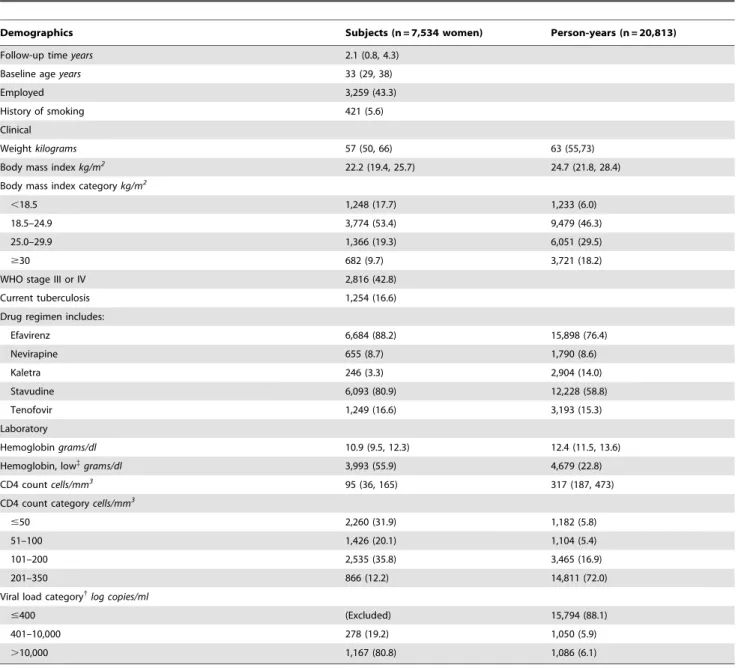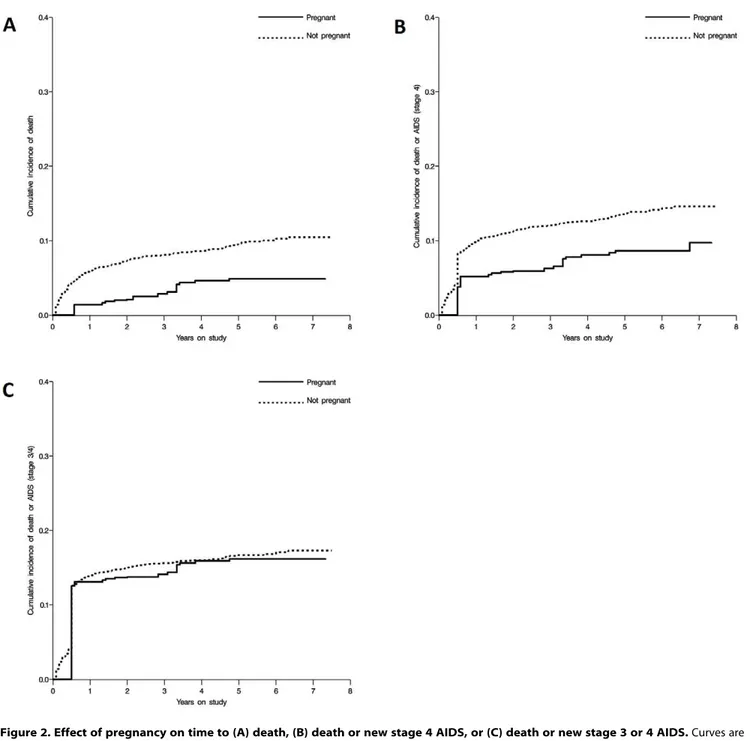Incident pregnancy and time to death or AIDS among HIV-positive women receiving antiretroviral therapy.
Texto
Imagem



Documentos relacionados
This is the first study comparing the prevalence of major depression in symptomatic HIV-positive women to that of asymptomatic HIV-positive women. Similar, previous studies
HIV testing coverage during pregnancy was de fi ned as the proportion of pregnant women among parturient women admitted for delivery who received ANC and who had an HIV test
Rates of pregnancy decreased sharply with increasing age in all time periods; combining both the pre-ART and on-ART periods, women , 25 y of age had more than double the rate of
Impact of highly active antiretroviral therapy (HAART) on the incidence of opportunistic infections, hospitalizations and mortality among children and adolescents living with
De acordo com o software Qualigraf do Laboratório de Água, Solos e Tecidos Vegetais do Instituto Federal do Ceará, Campus Iguatu as amostras coletadas na ETE de Iguatu –
The aim of this study was to anal- yse the prevalence of HPV infection and the distribution of HPV types and HPV16 genetic variants in HIV-neg- ative and HIV-positive women with
101, III da Constituição Federal dos Estados Unidos do Brasil de 1946 (que com pouco significativas dife- renças redacionais é praticamente idêntico ao vigente art. 102 III CF),
Overweight nutritional status (obesity and pre-obesity) was seen in 25% of adult pregnant women and it was associated with increased risk for several adverse pregnancy outcomes, such